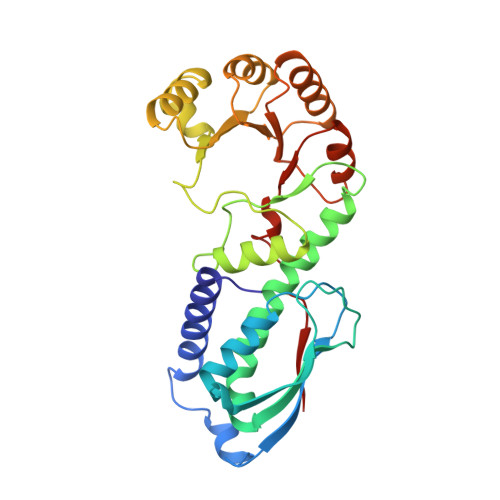Crystal structure of quinolinic acid phosphoribosyltransferase from Mycobacterium tuberculosis: a potential TB drug target.
Sharma, V., Grubmeyer, C., Sacchettini, J.C.(1998) Structure 6: 1587-1599
- PubMed: 9862811
- DOI: https://doi.org/10.1016/s0969-2126(98)00156-7
- Primary Citation of Related Structures:
1QPN, 1QPO, 1QPQ, 1QPR - PubMed Abstract:
. Mycobacterium tuberculosis is the single most deadly human pathogen and is responsible for nearly three million deaths every year. Recent elucidation of the mode of action of isoniazid, a frontline antimycobacterial drug, suggests that NAD metabolism is extremely critical for this microorganism. M. tuberculosis depends solely on the de novo pathway to meet its NAD demand. Quinolinic acid phosphoribosyltransferase (QAPRTase), a key enzyme in the de novo biosynthesis of NAD, provides an attractive target for designing novel antitubercular drugs. . The X-ray crystal structure of the M. tuberculosis QAPRTase apoenzyme has been determined by multiple isomorphous replacement at 2.4 A resolution. Structures of the enzyme have also been solved in complex with the substrate quinolinic acid (QA), the inhibitory QA analog phthalic acid (PA), the product nicotinate mononucleotide (NAMN), and as a ternary complex with PA and a substrate analog, 5-phosphoribosyl-1-(beta-methylene)pyrophosphate (PRPCP). The structure of the nonproductive QAPRTase-PA-PRPCP Michaelis complex reveals a 5-phosphoribosyl-1-pyrophosphate-binding site that is different from the one observed in type I phosphoribosyltransferases (PRTases). The type II PRTase active site of QAPRTase undergoes conformational changes that appear to be important in determining substrate specificity and eliciting productive catalysis. . QAPRTase is the only known representative of the type II PRTase fold, an unusual alpha/beta barrel, and appears to represent convergent evolution for PRTase catalysis. The active site of type II PRTase bears little resemblance to the better known type I enzymes.
Organizational Affiliation:
Department of Biochemistry and Biophysics, Texas A&M University, College Station, TX 77843, USA.
















